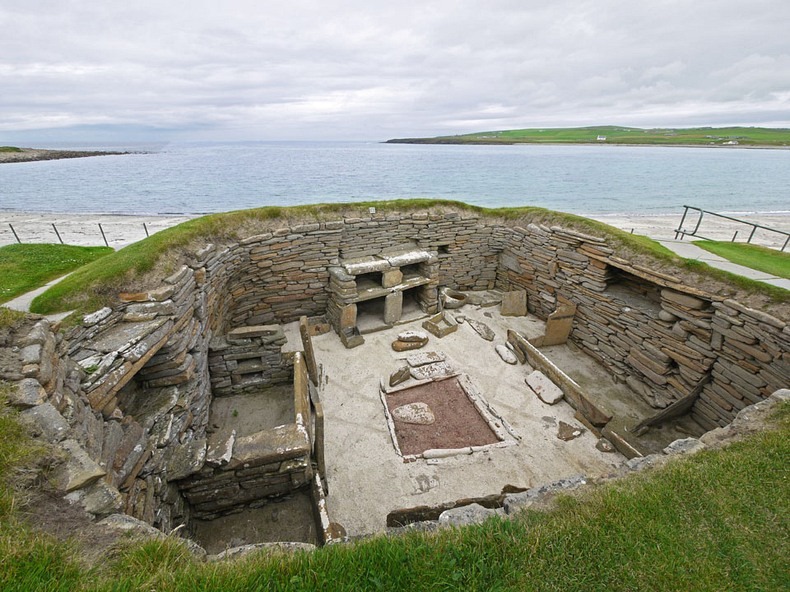Skara Brae, on the Bay of Skaill, in the Orkney Isles to the north-east of mainland Scotland, was a late Neolithic settlement consisting of eight stone houses that were inhabited between 3,200 and 2,500 BC. This ancient settlement is the best preserved Neolithic village in northern Europe. Not only are the walls of the structures still standing, and alleyways roofed with their original stone slabs, but the interior fittings of each house give an unparalleled glimpse into the lives of the farmers who lived there more than 5,000 years ago.
Skara Brae’s discovery was an accident. In 1850 a violent storm ravaged the Bay of Skaill revealing an outline of a village consisting of a number of small houses without roofs that was buried beneath the sand dunes. The local laird began an amateur excavation of the site, but after uncovering four houses the work was abandoned in 1868. The site remained undisturbed until 1913, when during a single weekend the site was plundered by a party with shovels who took away an unknown quantity of artifacts. In 1924 when another storm swept away part of one of the houses, it was determined the site should be made secure and more seriously investigated. The first proper excavation of Skara Brae was done in 1927.

© Amusing Planet, 2013.









Comments